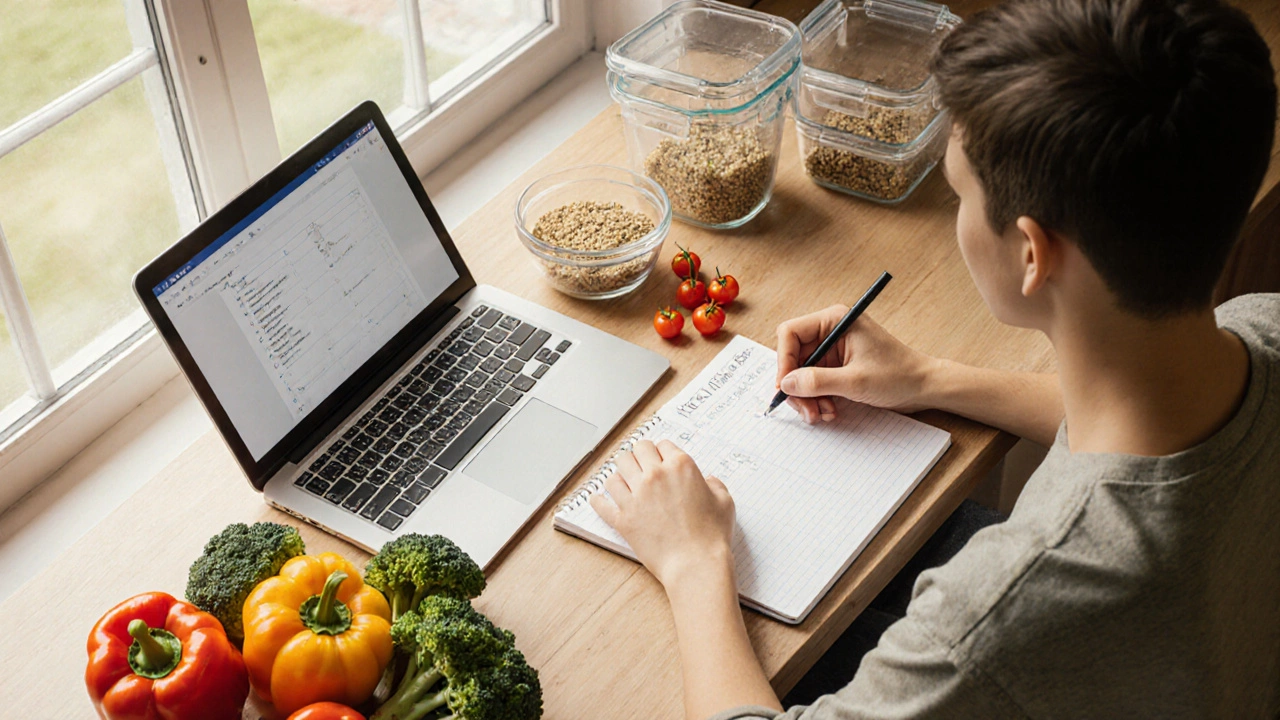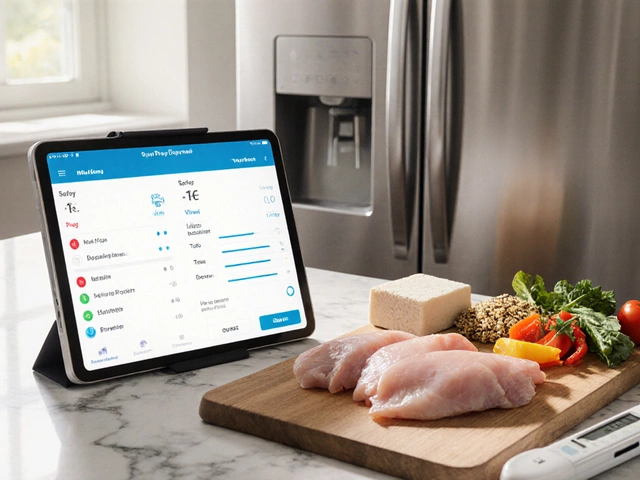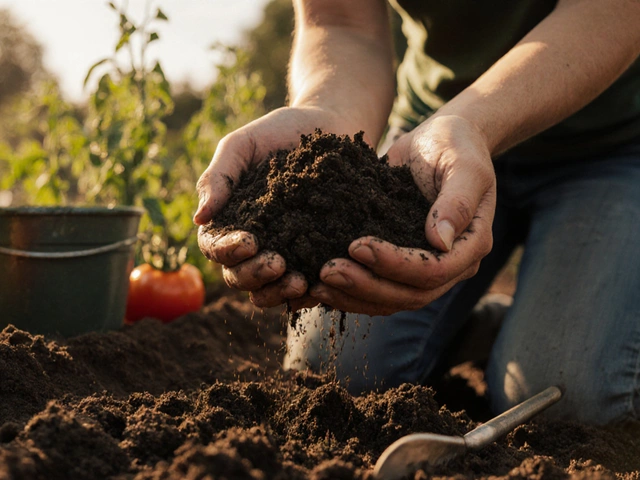Meal Prep Container Calculator
Calculate how many containers you need for your meal prep based on your weekly schedule and preferred storage types. The calculator follows the article's recommendations for optimal food storage and freshness.
When you hear Meal prep is the practice of preparing meals in advance so you can grab, heat, and eat without hassle, the first thing that comes to mind is often a mountain of containers and a boring weekly menu. What if you could turn that mountain into a smooth, predictable routine? Below are the core ideas that turn easy meal prep from a myth into a daily habit.
Key Takeaways
- Plan once, shop once, cook twice - the batch‑cooking shortcut.
- Use the right containers to keep food fresh for up to 5 days.
- Pick a few versatile proteins and veggies that mix and match.
- Reserve 30 minutes each Sunday for the bulk of your prep.
- Label, date, and rotate - the simple system that stops waste.
1. Start with a Solid Meal Plan
Before you even step foot in the grocery aisle, sketch a simple spreadsheet or a paper list that answers three questions: How many meals do you need? What nutritional balance do you want? Which ingredients can share a cooking method?
For most people, a 5‑day plan covering lunch and dinner works best. Include a protein, a carb, and a veggie for each meal, then add a quick snack option. Keep the plan flexible - if you’re short on time, swap a stovetop dish for a ready‑to‑heat freezer meal.
2. Embrace Batch Cooking
Batch cooking is the technique of cooking large quantities of a single ingredient or dish at once, then portioning it for later use. Instead of frying a chicken breast every night, roast a tray of 12 thighs on Sunday. Cook a big pot of quinoa, rice, or pasta, and store it in airtight containers.
Batch cooking cuts prep time by up to 70 % because you repeat the same steps only once. It also reduces energy usage and makes clean‑up a breeze.
3. Master Portion Control
Portion control is the practice of measuring out consistent serving sizes to meet dietary goals. Use a kitchen scale or measuring cups when you first set up your meals. A typical balanced plate looks like 4 oz protein, ½ cup cooked carbs, and 1 cup veggies.
Once you have the ratios down, you can eyeball future portions without the scale, saving time while staying on track with calories or macros.
4. Choose the Right Food Storage Containers
Food storage containers are reusable, airtight containers made from glass, BPA‑free plastic, or stainless steel designed for refrigeration, freezing, and microwaving. Invest in a set that includes:
- Medium‑size glass jars (1‑quart) for salads and sauces.
- Rectangular BPA‑free plastic containers (16‑oz) for stovetop dishes.
- Sturdy freezer bags for soups and stews.
Label each container with the dish name and date. A simple marker and a sticker make it easy to rotate food before it spoils.
5. Leverage Slow Cookers and Instant Pots
Slow cooker is an electric pot that cooks food at low temperatures over several hours, ideal for hands‑free meals. Toss in a protein, broth, and veggies in the morning, and by dinner you have a ready‑to‑serve dish.
Instant Pot is a multifunctional pressure cooker that can sauté, steam, and pressure‑cook in minutes. Use the “keep warm” setting for cooked grains while you finish the rest of the menu.
Both appliances let you cook two meals at once: a stew in the slow cooker and a quinoa batch in the Instant Pot.
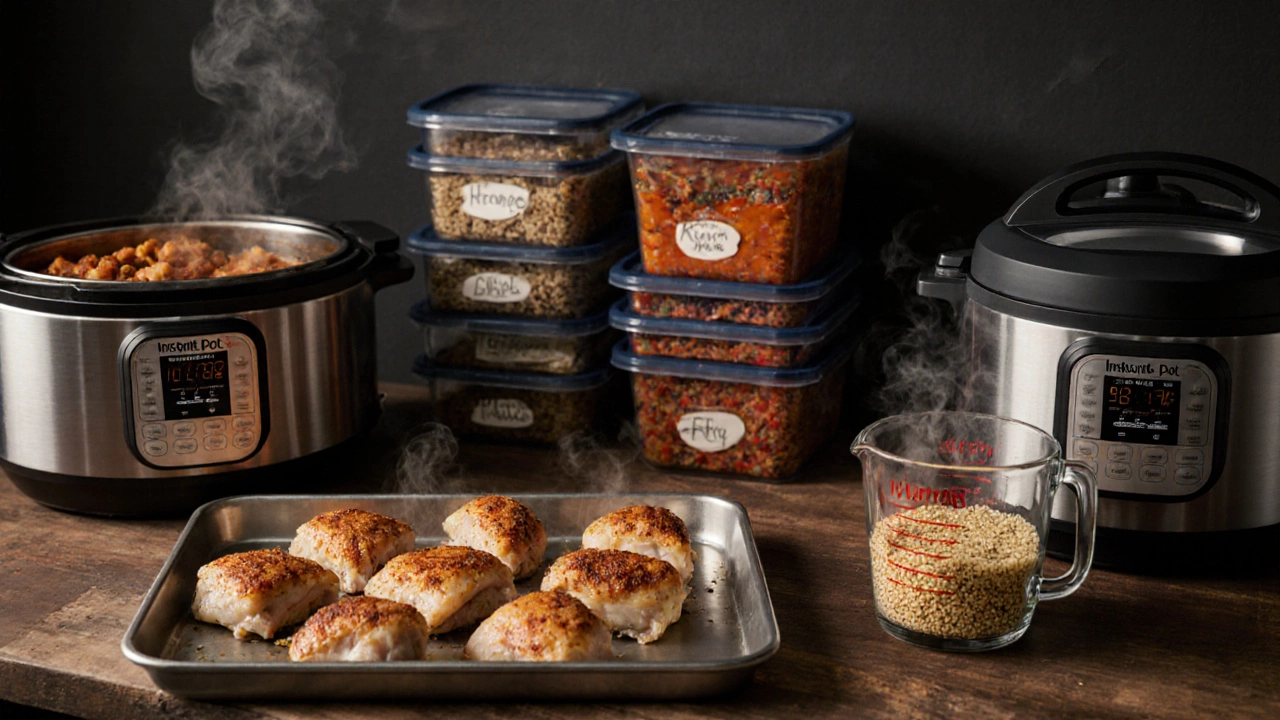
6. Build a Library of Mix‑and‑Match Recipes
Instead of nine unique dishes, create three base recipes that can be recombined. Example:
- Base protein: grilled chicken thighs.
- Base carbohydrate: roasted sweet potatoes.
- Base veggie: sautéed broccoli‑carrot mix.
Mix them with different sauces - teriyaki, pesto, or taco seasoning - and you get a new flavor each day without extra work.
7. Try Mason Jar Salads for On‑the‑Go
Mason jar salads are layered salads stored in glass jars that keep dressing at the bottom, preventing soggy greens. Assemble them the night before:
- Bottom: dressing.
- Middle: hearty veggies (cherry tomatoes, cucumbers, carrots).
- Top: leafy greens.
When you’re ready to eat, just shake the jar. One jar equals a complete lunch, and you can make five in under 20 minutes.
8. Set a Weekly 30‑Minute Prep Window
Pick a consistent day - Sunday works for most schedules - and allocate exactly 30 minutes to the following tasks:
- Wash and chop all raw veggies.
- Portion proteins into containers.
- Cook bulk carbs (rice, quinoa, pasta).
- Label and store everything.
The timer keeps you focused and prevents the prep from expanding into an all‑day chore.
9. Keep a Rotation System
Place newly prepared meals at the front of the fridge and move older ones to the back. Eat the oldest items first - the classic “first‑in, first‑out” rule. This habit eliminates waste and ensures you always have a fresh dish ready.
10. Troubleshooting Common Hiccups
Problem: Food gets soggy after a couple of days.
Solution: Store wet ingredients (sauces, dressings) separately and add them just before eating.
Problem: I forget what’s in a container.
Solution: Use a dry‑erase marker on the lid and write the dish name plus the date.
Problem: I feel bored with the same meals.
Solution: Rotate the sauces or spice blends each week. A quick sprinkle of curry powder or smoked paprika changes the flavor profile dramatically.
Comparison of Popular Prep Tools
| Tool | Average Prep Time per Batch | Cost (USD) | Food Shelf Life |
|---|---|---|---|
| Slow Cooker | 10 min active | ≈ 45 | 3‑5 days (refrigerated) |
| Instant Pot | 5 min active | ≈ 80 | 4‑6 days (refrigerated) |
| Mason Jar | 2 min per jar | ≈ 2 (per jar) | 5 days (refrigerated) |
| Batch‑Cooked Sheets (e.g., baked chicken) | 30 min total | ≈ 10 (ingredients) | 4‑5 days (refrigerated) |
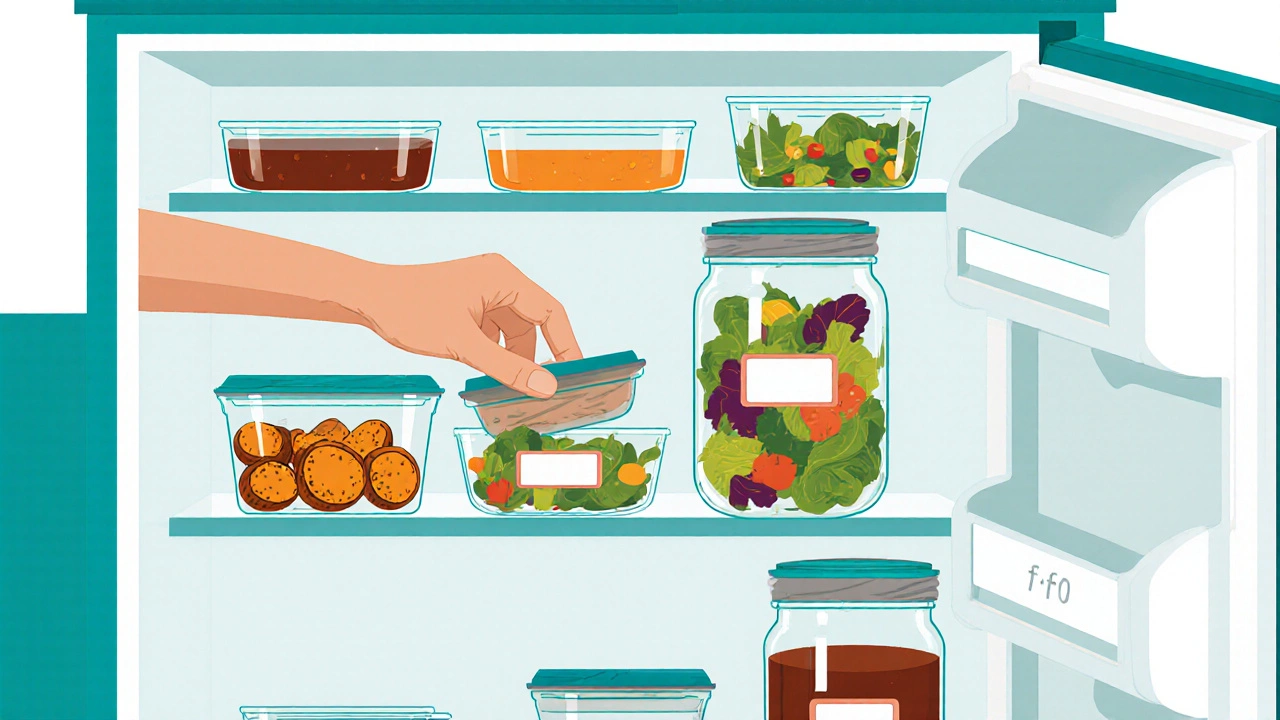
Wrap‑Up Checklist
- ✔️ Write a 5‑day meal plan.
- ✔️ Shop once using that list.
- ✔️ Cook proteins, carbs, and veggies in bulk.
- ✔️ Portion and label every container.
- ✔️ Store sauces separately.
- ✔️ Rotate meals using FIFO.
How long can I keep cooked chicken in the fridge?
Cooked chicken stays safe for 3‑4 days when stored in airtight containers at 40 °F (4 °C) or lower. Label the date and use the oldest pieces first.
Can I freeze meal‑prepped salads?
Leafy greens don’t freeze well; they become mushy. Freeze only the dressings, beans, or cooked grains, and assemble fresh greens when you’re ready to eat.
What’s the best container material for reheating?
Glass containers are microwave‑safe, non‑reactive, and keep flavors intact. Look for BPA‑free plastic if weight is a concern, but avoid reheating in thin plastic for long periods.
How do I prevent freezer burn?
Wrap foods tightly in a freezer‑grade bag or double‑wrap in foil before placing in a container. Remove as much air as possible; label with the freeze date.
Is it okay to eat the same meal every day?
Nutrition wise it’s fine if you meet macro and micronutrient needs, but variety keeps you from getting bored. Switch sauces, spices, or side veggies to keep it interesting.
